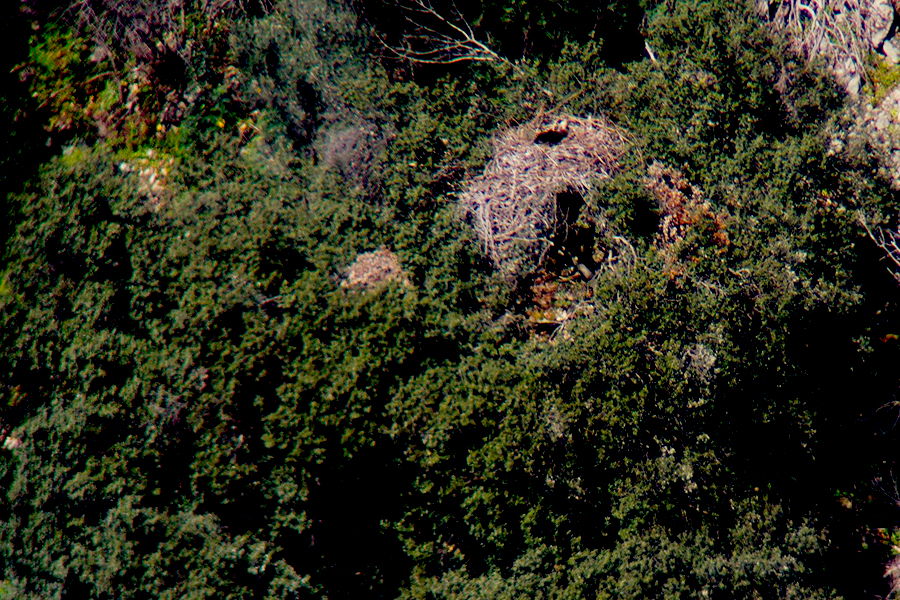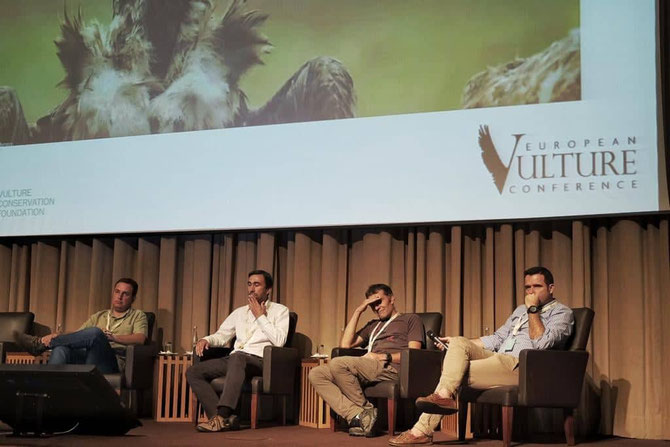
Another day full of fascinating talks and presentations has gone by here at the European Vulture Conference.
Have a look at today’s highlights!
Iñigo Fajardo
What can wildlife crime analysis do for vulture conservation?

Day 2 of the conference started with Iñigo Fajardo discussing the “dark side” of vulture conservation – how vultures die and how to use wildlife crime analysis to stop illegal killing. He is a wildlife crime expert that combats wildlife crime through forensic work against illegal poisoning and wildlife crime, collaborating with law enforcement authorities in Andalucía, Spain.
André Botha
Making progress towards the conservation of sub-Saharan African vultures within the framework of the CMS Vulture MsAP
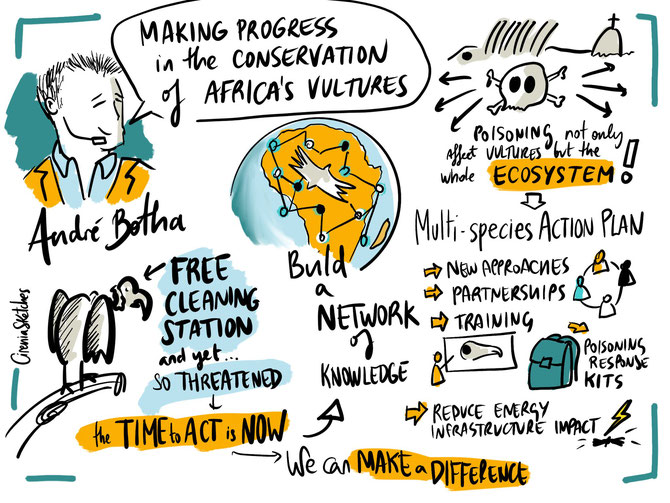
André Botha took us through the conservation of sub-Saharan African vultures within the framework of the Vulture MsAP, co-developed by us and endorsed by the Convention for Migratory Species. This year alone, more than 1200 vultures were poisoned in southern Africa, with 537 vultures dying from a single poisoning incident in Botswana. Vultures in Africa face another major threat – they are killed for illegal belief-based use. To combat this, almost 1800 people were trained in effective response to poisoning incidents in southern and East Africa since 2017. But it is not just bleak news in Africa, the largest Cape Vulture population on the planet, Blouberg in SA, is increasing!
Chris Bowden
Coordinating a regional response to the Asian Vulture Crisis, including the creation of the ‘SAVE’ consortium, with updates on where things stand

Now Chris Bowden explains how the SAVE consortium has enabled the effective response to the Asian Vulture Crisis. Since the dramatic decline of vulture populations in 2008 due to diclofenac poisoning, captive breeding has produced more than 400 vultures for population reinforcement. Importantly, the consortium includes three national governments as well as a host of NGOs and other institutions. Progress with national action plans is reviewed and reported annually. The ex-situ and in-situ conservation action has produced a statistically significant increase of White-rumped vultures in Nepal. But harmful vet drugs remain a serious threat.
Jorge Orueta
25 years of illegal poisoning in Spain

On behalf of David de la Bodega, Jorge Arueta from SEO, presented the case of poisoning in Spain – historically, poisoning was legal and targeted. The role of NGOs against illegal poisoning is very important. They are refining the knowledge on the impact of wildlife poisoning, disseminating the consequences of poisoning and raising awareness on the problem, ensuring the application of the law and carrying out political lobbying and actions aimed at solving the problem.
Marta Herrero
Monitoring NSAIDs in carrion and vultures after diclofenac registration for veterinary use in Spain
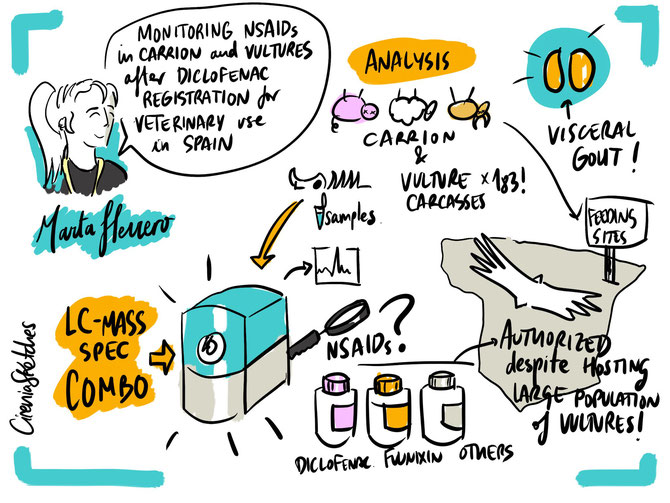
Marta Herrero from IREC toxicological investigations lab talked about monitoring veterinary drugs such as diclofenac in Spain. NSAID residues have been detected in vultures through sampling in Spain, including a case of visceral gout in one dead vulture. NSAIDs have also been detected in carrion at vulture feeding sites, indicating that safety protocols were not followed effectively.
Elzbieta Kret
Sniffing dogs at the service of vultures – results from the operation of the first anti-poison dog units in the Balkans

Elzbieta Kret from WWF Greece spoke about using detection dogs to combat poisoning. To indicate how dogs are used to combat poisoning, she shared the story of Lazarus, an Egyptian Vulture poisoned twice. The secret is using the dogs’ keen sense of smell, with 125-220 million olfactory receptors (humans only have 5 million), they can sniff poisonous baits and animals from miles away.
David Izquierdo
Assessing vulture mortality at a continental scale: the benefits of centralized and standardized data

Our Bearded vulture captive breeding assistant, David Izquierdo, talked about recording and assessing vulture mortality at a continental scale and compiling mortality records from many collaborators to identify risk hotspots and inform conservation action. Collating and analyzing data eventually informs conservation plans and actions.
Vultures through art

In addition to the scientific programme, we had a couple of side activities today. Rory McCann showed us how to use art as a conservation tool.This was followed by a presentation by Judith Brulo, who told us how music and storytelling could engage children with vulture conservation.
You can keep up to date with the latest updates of the conference by following the hashtag #Vultures2019. We are live-tweeting some of the fascinating presentations, so make sure you follow us on Twitter!
The European Vulture Conference
1-4 October
Algarve, Portugal
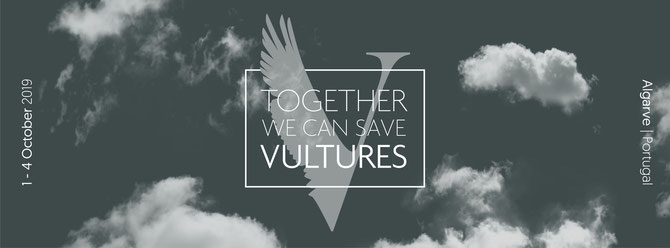
For the first four days in October, we will be bringing together scientists, conservationists and the public in Algarve, Portugal for an international congress on vultures in our first European Vulture Conference. World-leading speakers will be shaping the conversation on the latest research and conservation studies about vultures in Europe and beyond. On the last day of the conference, we will venture out and explore the local nature. The Algarve is known for its wetlands, woodlands and other habitats that are rich in biodiversity, so get ready for a fantastic day out in nature!



